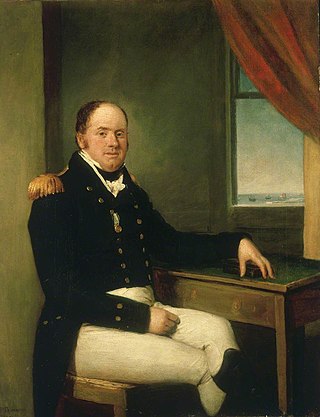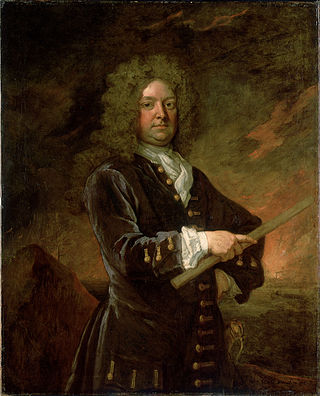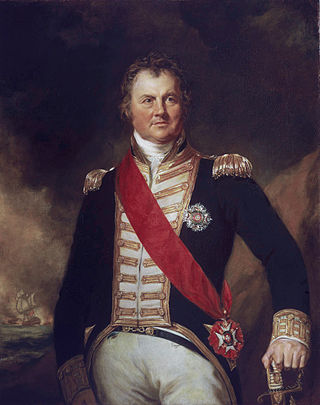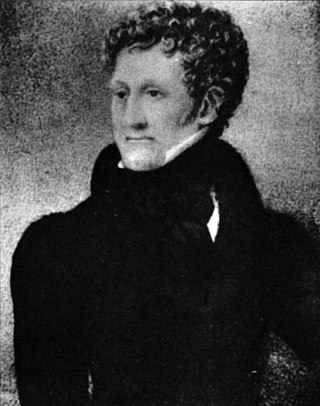Related Research Articles

Admiral of the Fleet Richard Howe, 1st Earl Howe,, was a British naval officer. After serving throughout the War of the Austrian Succession, he gained a reputation for his role in amphibious operations against the French coast as part of Britain's policy of naval descents during the Seven Years' War. He also took part, as a naval captain, in the decisive British naval victory at the Battle of Quiberon Bay in November 1759.

Admiral of the Blue Edward Boscawen, PC was a British admiral in the Royal Navy and Member of Parliament for the borough of Truro, Cornwall, England. He is known principally for his various naval commands during the 18th century and the engagements that he won, including the siege of Louisburg in 1758 and Battle of Lagos in 1759. He is also remembered as the officer who signed the warrant authorising the execution of Admiral John Byng in 1757, for failing to engage the enemy at the Battle of Minorca (1756). In his political role, he served as a Member of Parliament for Truro from 1742 until his death although due to almost constant naval employment he seems not to have been particularly active. He also served as one of the Lords Commissioners of the Admiralty on the Board of Admiralty from 1751 and as a member of the Privy Council from 1758 until his death in 1761.

Vice-Admiral Sir Thomas Masterman Hardy, 1st Baronet, GCB was a British Royal Navy officer. He took part in the Battle of Cape St. Vincent in February 1797, the Battle of the Nile in August 1798 and the Battle of Copenhagen in April 1801 during the French Revolutionary Wars. He served as flag captain to Admiral Lord Nelson, and commanded HMS Victory at the Battle of Trafalgar in October 1805 during the Napoleonic Wars. Nelson was shot as he paced the decks with Hardy, and as he lay dying, Nelson's famous remark of "Kiss me, Hardy" was directed at him. Hardy went on to become First Naval Lord in November 1830 and in that capacity refused to become a Member of Parliament and encouraged the introduction of steam warships.

Admiral of the Fleet Sir George Rooke was an English naval officer. As a junior officer he saw action at the Battle of Solebay and again at the Battle of Schooneveld during the Third Anglo-Dutch War. As a captain, he conveyed Prince William of Orange to England and took part in the Battle of Bantry Bay during the Williamite War in Ireland.

Thomas Mathews was a British officer of the Royal Navy, who rose to the rank of admiral.
John Elliot was a Scottish officer of the Royal Navy who served during the Seven Years' War and the American War of Independence. He rose to the rank of admiral, and served briefly as colonial governor of Newfoundland.

Admiral of the Fleet Sir John Leake was a Royal Navy officer and politician. As a junior officer he saw action at the Battle of Texel during the Third Anglo-Dutch War. He then distinguished himself when he led the convoy that broke the barricading boom at Culmore Fort thereby lifting the siege of Derry during the Williamite War in Ireland. As a captain he saw action in some of the heaviest fighting at the Battle of Barfleur and was also involved in a successful attack on the French ships at the Battle of La Hogue during the Nine Years' War.

Admiral of the White Sir John Balchen, sometimes written as Balchin, was an officer of the British Royal Navy with a long and distinguished career during the late 17th and early 18th centuries. In the course of his service at sea, Balchen saw action in numerous battles against the French and Spanish navies across 60 years and three separate wars. He was twice captured by the French in action, both times being exonerated and commended for the defence of his ships against overwhelming odds.

Admiral Sir Edward Thornbrough, GCB was a senior, long-serving veteran officer of the British Royal Navy during the late eighteenth and early nineteenth century. He saw action in the American Revolutionary War, the French Revolutionary Wars and the Napoleonic Wars, being wounded several times and once captured by American forces after a shipwreck. During the wreck, his conduct towards American prisoners aboard his ship was considered so exemplary that the American authorities later released him without parole or exchange.

Rear-Admiral Sir Thomas Louis, 1st Baronet was an officer of the Royal Navy who saw action during the American Revolutionary War and the French Revolutionary Wars. He was one of Horatio Nelson's "Band of Brothers" in the Mediterranean in 1798, commanding a ship at the Battle of the Nile. Later, he was second in command at the Battle of San Domingo, for which service he was made a baronet.
Sir Francis Wheler was an officer of the Royal Navy who served during the Nine Years' War.

Admiral of the Fleet Sir George Martin was an officer of the Royal Navy who saw service during the American War of Independence, and the French Revolutionary and Napoleonic Wars. During his long naval career he took part in several significant battles, for which he was awarded a number of honours and promotions; he commanded ships at Cape St Vincent and Cape Finisterre.

The action of 8 January 1780 was a naval encounter off Cape Finisterre between a British Royal Naval fleet under Admiral Sir George Rodney, and a fleet of Spanish merchants sailing in convoy with seven warships of the Caracas Company, under the command of Commodore Don Juan Augustin de Yardi. During the action the entire Spanish convoy was captured. Rodney's fleet was en route to relieve Gibraltar, and this action took place several days before Rodney's engagement and defeat of a Spanish fleet at the Battle of Cape St. Vincent.
Rear-Admiral James Walker CB, CvTE was an officer of the Royal Navy. He served during the American War of Independence, and the French Revolutionary and Napoleonic Wars.

Philemon Pownoll of Sharpham in the parish of Ashprington in Devon, England, was an officer of the Royal Navy who saw service during the War of the Austrian Succession, the Seven Years' War and the American War of Independence, rising to the rank of post-captain.

HMS Prince William was a 64-gun third-rate ship of the line of the Royal Navy. She had previously been Guipuzcoano, an armed 64-gun ship of the Spanish (Basque) mercantile Guipuzcoan Company of Caracas. She was also known by the religious name of Nuestra Señora de la Asunción.

Rear-Admiral James Macnamara was an officer of the Royal Navy who served during the American War of Independence and the French Revolutionary and Napoleonic Wars.
Sir William Jumper was an officer of the Royal Navy. He rose to the rank of captain after service in the Nine Years' War and the War of the Spanish Succession. He is known for being one of the first to step onto land during the Capture of Gibraltar in 1704. Jumper's Bastion in Gibraltar was named after him.
Sir Edward Whitaker was an officer of the Royal Navy. He served during the War of the Spanish Succession and is known for his role in the Capture of Gibraltar and the Battle of Málaga in 1704.
Rear-Admiral Polycarpus Taylor was a Royal Navy officer of the eighteenth century, most notable for his service commanding ships in the West Indies during the War of the Austrian Succession. Having joined the Royal Navy some time before 1733, Taylor served at the Battle of Cartagena de Indias and Invasion of Cuba before being promoted to commander in 1742. After commanding several vessels and being promoted to post-captain, in August 1744 Taylor took command of HMS Fowey; serving in the English Channel he ran ashore and destroyed the French privateer Griffon in 1745.
References
- ↑ "Staffordshire Pedigrees". p. 172.
- 1 2 3 Le Fevre, Peter. "Acton, Edward". Oxford Dictionary of National Biography (online ed.). Oxford University Press.(Subscription or UK public library membership required.)
- 1 2 Rose, Hugh James (1857). "Acton, Edward". A New General Biographical Dictionary. Vol. 1 AA–ANS. London: B. Fellowes et al. p. 81.